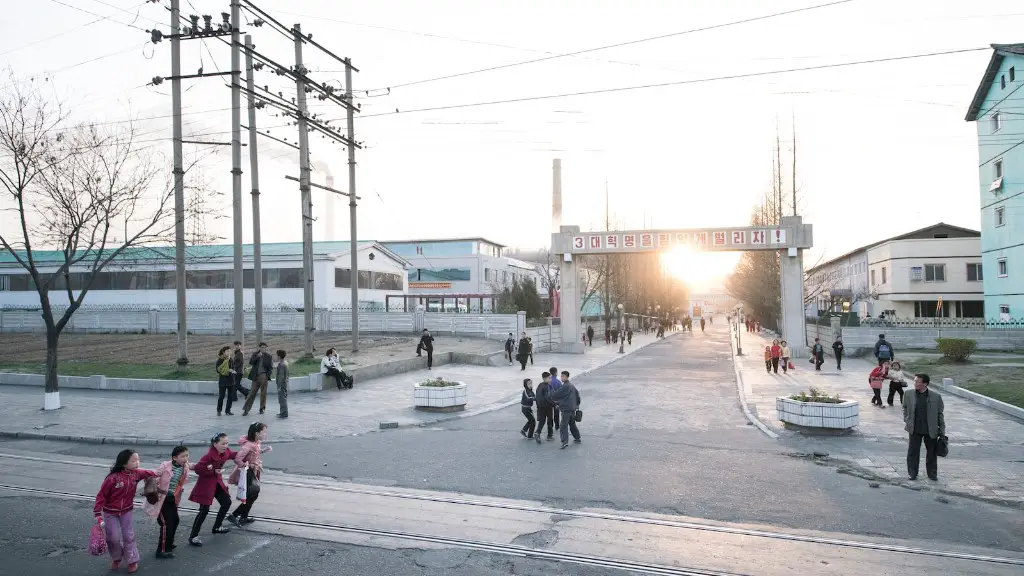Introduction
Submarines are historically a key factor in successful military strategies, and North Korea is no exception. It has long been speculated that North Korea has a massive fleet of submarines, with experts estimating their fleet size to be anywhere between 40 to 70 vessels. North Korea has recently invested heavily in technology that can allow them to deploy submersible vessels for a variety of different military missions.
Since the 1970s, North Korea has been building up its submarine fleet in order to maintain its power and improve its naval capabilities. From the 1950s to the early 2000s, the North Korean regime has sought to expand its navy’s capabilities in the region, including attention to its submarine capabilities.
Types of Submarines Used in North Korea
As far as submarines are concerned, North Korea depends mainly on diesel-electric vessels. These are comparatively easier to build and operate. They tend to be smaller and quieter than their nuclear counterparts, thereby making them harder to find and detect.
More recently, North Korea has also made some advances towards building more sophisticated submarines. It is estimated that the country currently has and is working on several types of mid-sized and larger submarines such as the Sinpo, Changbogo and Sang-O class. They likely also possess one or two older models such as the Russian-made Romeo class.
It has also been speculated that the country is likely to be working on a prototype for a submarine-launched ballistic missile program. This would be a potentially devastating addition to their already formidable arsenal of weapons.
The North Korean navy also makes use of advanced training methods to ensure the successful deployment and operation of their submarines. They have established a system of naval trainers who specialize in the operation and execution of submarine combat and the related tactics involved. In addition, they have advanced computerized and networked weapon systems that allow them to precisely target enemies and launch accurately and with precision.
The North Korean navy has demonstrated its capability with several unexpected submarine sorties, which is a testament to the skill and effectiveness of their training program. In addition, North Korea has also recently tested several successful submarine-launched ballistic missile programs, thus demonstrating their capability and skill in this field.
Imports and Exports of Submarines
North Korea has also been known to illegally import and export submarines to various countries around the world. The main recipients of these shipments are thought to be Iran, Syria, and Yemen. Other countries have also been known to receive shipments, including Russia and China, who are main suppliers to the North Korean regime.
These shipments are believed to be part of a larger attempt to bolster North Korea’s military capabilities as well as to arm other countries, for motives which are still unclear, particularly in light of North Korea’s recent attempts at improving relations with some of their international neighbours.
Political Impact of North Korean Submarines
The use of submarines has provided North Korea with a powerful military edge, enabling it to pursue its interests without having to face the full brunt of international retaliation. It has also allowed the nation to be more aggressive with its policies, such as the recent missile deployment near the border with South Korea.
Moreover, it has also led to some potential sources of tension between North Korea and other countries in the region. For instance, a recent incident involving the seizure of a North Korean vessel by South Korean forces indicated the potential for further tensions over such activities.
As such it is clear that North Korean submarines have had a noticeable political impact in the region. Whether for better or for worse, it remains to be seen how the ongoing tension between North Korea and its neighbours will pan out but for now it is clear that the presence of submarines has had a significant impact.
Ongoing Conflict and Its Effect on Submarines
The ongoing conflict between North Korea and the United States has also had a large impact on the country’s submarine fleet. Sanctions have made it increasingly difficult for North Korea to acquire materials to build and maintain its submarines, as well as to acquire the necessary weapons and fuel to keep them running.
This has had a noticeable effect on the fleet size, as the number of submarines has decreased in the last few years. In addition, the quality of submarines has also decreased due to the lack of resources. As such, it is clear that the ongoing conflict has taken its toll on the North Korean submarine fleet.
Conclusion
North Korea is believed to have a vast submarine fleet with estimates ranging anywhere between 40 to 70 vessels. This fleet consists of both diesel-electric powered vessels as well as some more sophisticated models. The North Korean navy is also notable for its advanced naval training methods and use of advanced weapon systems.
Furthermore, North Korea has also been known to import and export submarines to other countries in the region. Moreover, the political impact of these submarines is hard to ignore, as they have enabled North Korea to pursue its interests without facing any serious international retaliation.
Finally, the ongoing conflict between North Korea and its neighbours has also taken its toll on the country’s submarines, reducing their quality and number. It remains to be seen how this dynamic could change in the near future.




